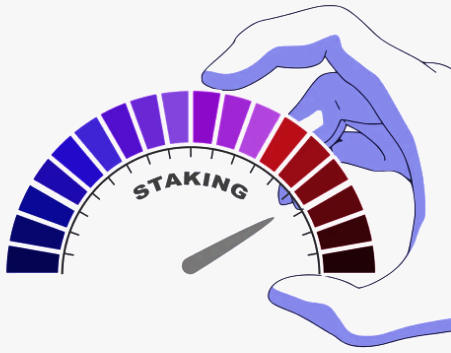Accredited InvestorsAltcoinAnatoli UnitskyAnti-Money Laundering (AML) In CryptoAPIArbitrageArtCoin TokenArticle DirectoryASICAuction Terminology GlossaryBasics of Stock Market InvestingBear MarketBest Crypto Payment Provider In the WorldBitcoinBlockchainBlockchain ConfirmationBlockchain Consensus MechanismBlockchain ForkBlockchain GlossaryBored Ape Yacht ClubBuild a Business That OutperformsBull MarketBuying SkyWay SharesByzantine Fault Tolerance (BFT) ExplainedCasascius CoinCentral Bank Digital Currency (CBDC)Centralized Crypto ExchangeCoinCoinsetCold WalletCollateralCommodity Futures Trading Commission (CFTC)Cross-Chain TechnologyCRUCrypto ExchangeCrypto GlossaryCrypto JokesCrypto Terms to KnowCrypto TickerCryptocurrencyCryptographyCryptojackingCryptounit BlockchainCryptounit GlossaryCryptounit ProgramdApp (Decentralized Application)Dead CoinDecentralized Exchange (DEX)Decentralized Finance (DeFi)Difference Between Bitcoin and EthereumDifferent Ways of Investing MoneyDigital CurrencyDistributed LedgerDo Your Own Research (DYOR)Dollar Cost Averaging (DCA)Dow Jones Industrial Average (DJIA)EncryptionERC-20ERC-721EthereumEvoScentFear Of Missing Out (FOMO)Fear, Uncertainty and Doubt (FUD)Fiat MoneyFNT Fintech CompanyGenesis BlockGlobal Unit PayGlossary of Banking TermsGlossary of Business TermsGlossary of Financial TermsHalvingHODLHot WalletHow Do I Start InvestingHow Rich is Satoshi Nakamoto?How to Create a BlockchainHow to Find Private InvestorsHow to Get Into FintechHow to Program Smart ContractsI Am Thrilled to Be a Part of This Global ProjectInitial Coin Offering (ICO)Initial Public Offering (IPO)Initial Token Offering (ITO)Innovation Basalt TechnologyInnovative Transportation TechnologiesInternational Bank Account Number (IBAN)Investing in Gold Mining StocksInvesting in Gold MiningJagerJoy of Missing Out (JOMO)Know Your Customer (KYC)LedgerLiquidity in CryptocurrencyMaker and Taker Fees in Crypto TradingMarket Capitalization (Market Cap)Meme CoinMetal Credit CardMetaMaskMillenials Now Have Access to Generational WealthMy Best Investment EverNew Digital EvolutionNFT GlossaryOff-Chain TransactionsOn-Chain TransactionsOpen Edition NFTPeer-to-Peer (P2P)Personal Loan GlossaryProbably the Best STO on the MarketProof of Stake (PoS)Real Estate Glossary of TermsReal Estate Investing GlossaryRebase TokenSecurities and Exchange Commission (SEC)Security Token ExchangesSecurity Token Offering (STO)Soulbound Decentralized Identities for Security TokensSoulbound ID Launch by Stobox Proves a SuccessSoulbound TokensStoboxStock Market GlossaryTestimonialsTether Platform and Token (USDT)UnitEx ExchangeUnitsky String TechnologiesUNTBUSDUValidatorWe Started Investing When We Were 25What are Blue Chip NFT?What are Blue Chip Stocks?What are Crypto Assets?What are Crypto Smart Contracts?What are CryptoPunks NFT?What are Digital Assets?What are Digital Collectibles?What are Gas Fees?What are Gas Wars?What are Hashmasks?What are Non Fungible Tokens?What are Non-Sufficient Funds (NSF)?What are Soulbound Tokens (SBT)?What are Stablecoins in Crypto?What are Transactions Per Second (TPS)?What are Utility NFTs?What are Utility Tokens?What Does Burning Crypto Mean?What Does Diamond Hands Mean?What Does Paper Hands Mean?What Does To The Moon Mean?What Does WAGMI Mean?What Happened to Satoshi Nakamoto?What is a 51% Attack?What is a Baby Boomer?What is a Backlink?What is a Banner?What is a Barcode?What is a Bid-Ask Spread in Crypto?What is a Block in Blockchain?What is a Block Reward?What is a Blockchain Address?What is a Blockchain Node?What is a Blockchain Oracle?What is a Blog?What is a Bond?What is a Bot?What is a Broker?What is a Business Accelerator?What is a Cash Cow?What is a Commercial Bank?What is a Commodity?What is a Con?What is a Credit?What is a Credit Limit?What is a Credit Rating?What is a Crypto Airdrop?What is a Crypto Bridge?What is a Crypto Scam?What is a Crypto Token?What is a Crypto Wallet?What is a Crypto Whale?What is a Crypto Winter?What is a Cryptocurrency Public Ledger?What is a Cryptocurrency Roadmap?What is a DAO?What is a Dark Pool?What is a Day Trader?What is a Dead Cat Bounce?What is a Default?What is a Derivative?What is a Digital Credit Card?What is a Fiscal Quarter?What is a Fungible Token?What is a Governance Token?What is a Grace Period?What is a Hard Fork?What is a Hot Wallet?What is a Hybrid Blockchain?What is a Hybrid PoW/PoS?What is a Joint Account?What is a Market Cap?What is a Merkle Tree in Blockchain?What is a Mining Farm?What is a Nonce? What is a PFP NFT?What is a POS System?What is a Prepaid Card?What is a Private Blockchain?What is a Private Key?What is a Public Blockchain?What is a Public Key?What is a Reserve Currency?What is a Ring Signature?What is a Routing Number?What is a Rug Pull in Crypto?What is a Safe Deposit Box?What is a Satoshi?What is a Security Token?What is a Seed Phrase?What is a Shitcoin?What is a Sidechain?What is a Soft Fork?What is a Spot Market?What is a State Bank?What is a SWIFT Code?What is a Tax Identification Number (TIN)?What is a Time Deposit?What is a Transaction Account?What is a Variable Interest Rate?What is a Virtual Assistant (VA)?What is a Virtual Card?What is a Virtual Currency?What is a Visa Card?What is a Whitelist in Crypto?What is a Whitepaper?What is Accounts Payable (AP)?What is AMA in Crypto?What is Amortization?What is an Accrual?What is an ACH Transfer?What is an Actuary?What is an Addendum?What is an Algorithm?What is an Angel Investor?What is an Annuity?What is an Asset?What is an ATM?What is an Atomic Swap?What is an Audit?What is an Avatar?What is an EIN?What is an Embargo?What is an Entrepreneur?What is an IDO (Initial Dex Offering)?What is an Interest Rate?What is an Internet cookie?What is an Investment Bank?What is an NFT Drop?What is an NFT Floor Price?What is an Ommer Block?What is an Orphan Block?What is an Outstanding Check?What is an Overdraft?What is Artificial Intelligence (AI)?What is B2B (Business-to-Business)?What is B2G (Business-to-Government)?What is Bartering?What is Bitcoin Dominance?What is Bitcoin Pizza Day?What is Blockchain Immutability?What is Blockchain Used For?What is BRICS?What is Business-to-Consumer (B2C)?What is C2C (Customer to Customer)?What is Capitalism?What is Catfishing?What is CFD Trading?What is Check Kiting?What is Cloud Mining?What is Communism?What is Content Marketing?What is Decentralization in Blockchain?What is DeFi in Crypto?What is Delisting?What is Depreciation?What is Digital Marketing?What is Diversification?What is Double Spending?What is Dumb Money?What is Dumping?What is Earnings Per Share (EPS)?What is Economics?What is Email Marketing?What is Equity?What is Etherscan?What is Fintech?What is Foreign currency?What is Forex?What is Fundamental Analysis (FA)?What is GameFi?What is Generative Art NFT?What is Gwei?What is Hard Currency?What is Hash Rate?What is Hashing in Blockchain?What is Inflation?What is Initial Game Offering (IGO)?What is Interest?What is Interest Income?What is Mainnet?What is Mastercard?What is Metaverse in Crypto?What is Mining in Cryptocurrency?What is Minting NFT?What is Mobile Banking?What is Money Laundering?What is NFT Alpha?What is NFT Metadata?What is NFT Rarity?What is NGMI Meaning?What is Nominal Interest Rate?What is Online Banking?What is Open-End Credit?What is OpenSea NFT Marketplace?What is Personal Identification Number (PIN)?What is Play-to-Earn?What is Polygon?What is Proof of Authority (PoA)?What is Proof of Work (PoW)?What is Public Key Cryptography?What is Pump and Dump?What is Quantum Computing?What is Refinancing?What is Retail Banking?What is Ripple?What is Sharding?What is Slippage in Crypto?What is Smart Money?What is Solvency?What is Soulbound ID?What is SSL?What is Staking in Cryptocurrency?What is Technical Analysis (TA)?What is Testnet?What is the Ask Price?What is the Better Business Bureau (BBB)?What is the Bid Price?What is the Dark Web?What is the InterPlanetary File System (IPFS)?What is the Gold Standard?What is the Lightning Network?What is the Prime Rate?What is the Sandbox?What is the Secondary Market?What is the World Bank?What is Tier 1 Capital?What is Tokenomics?What is TRC-20?What is Universal Banking?What is Unspent Transaction Output (UTXO)?What is Usury?What is Volatility in Crypto?What is Wash Trading?What is Web3?What is Whisper?What is XRP?What is Zero-Knowledge Proof (ZKP)?Who is Beeple?Who is Satoshi Nakamoto?Who is Vitalik Buterin?Why Tokenization is a Safe HavenWhy You Should Try Your Hand at Trading
What is Hash Rate?
- Home
- Blockchain Glossary
- What is Hash Rate?
Hash rate is a crucial metric for crypto investors to gauge the degree of decentralization of a cryptocurrency's proof-of-work network and its vulnerability to hacking attempts.

A higher hash rate implies greater complexity and expense for anyone attempting to breach the network. Conversely, a sudden drop in hash rate may prompt crypto platforms to suspend trading or remove a coin from their offerings to safeguard their clients.
What is Hash Rate?
The hash rate serves as a yardstick for the computational power present in a proof-of-work (PoW) cryptocurrency network, reflecting the network's health, security, and mining difficulty. In PoW systems, hashing entails generating a random alphanumeric code, and miners compete to guess the code or a close approximation of it.
The hash rate quantifies the rate at which these guessing attempts occur across the entire network, measured in guesses per second. In PoW mining, each miner's hash rate is determined by the number of guesses their computer makes per second in solving the hash. As more miners join the network and compete to solve the hash, the hash rate rises.
The winner who guesses the value equal to or less than the target hash value gets to add the next block to the blockchain and receive a crypto reward called a block reward. The hashing algorithm used by a blockchain network generates the hash code, which is the starting point for the mining computers.
The Significance of Hash Rate in Blockchain Networks
Hash rate is a crucial metric for assessing the security of a blockchain network and the mining difficulty for block rewards. A higher hash rate, which reflects more miners involved in mining blocks, enhances the network's security by reducing the likelihood of malicious attacks.
The mining difficulty on some blockchain networks increases as the hash rate goes up, making it challenging for individual miners to compete in networks with high hash rates. As a result, hash rate has a profound impact on the profitability and sustainability of mining operations in blockchain networks.
Understanding the Impact of Hash Rate Changes
The hash rate is a measure of the computational power employed by miners in a proof-of-work (PoW) blockchain network. A change in the hash rate can have significant effects on the network's security, mining difficulty, and power consumption.
An increase in the hash rate indicates that more miners are actively engaged in mining blocks, leading to a rise in computational resources and electrical power consumption. This, in turn, enhances the network's security as it becomes more challenging to overpower the network by a single entity.
However, mining becomes more difficult as blockchain algorithms often increase the mining difficulty with a rise in the hash rate.
A decrease in the hash rate of a PoW network, on the other hand, indicates fewer miners are competing to add blocks and earn block rewards. This results in decreased network security, making it more vulnerable to a 51% attack, where a group of miners with more than 50% of the network's hash rate can alter the blockchain.
This decrease in hash rate also leads to lower power consumption and a decline in mining difficulty, making it easier to mine blocks. These changes in hash rate can have a significant impact on the profitability and sustainability of mining operations in a PoW blockchain network.
Understanding Mining Difficulty
Mining difficulty refers to the level of difficulty miners face to generate a hash that falls below a pre-defined target hash. This is achieved by adjusting the numeric value of the hashed block header. For instance, in Bitcoin, mining difficulty is determined by an internal score that begins at 1 (the easiest level) and increases or decreases exponentially depending on the number of miners participating in the network.
If blocks are discovered more frequently than the target time, the difficulty increases, and if they are discovered less often, the difficulty decreases. As more miners join the network, the hash rate increases, meaning there are more "guesses" generated, and the probability of discovering the correct hash quickly also increases.
Therefore, the difficulty level is programmed to adjust automatically after a specific number of blocks to keep the rate of block discovery consistent.
The Bottom Line
Hash rate is a crucial metric in understanding the health, security, and mining difficulty of a proof-of-work blockchain network. It measures the computational power used by miners to guess a hash value, and a higher hash rate means increased security but also increased mining difficulty. A decrease in hash rate can lead to network vulnerabilities and easier mining.
Related Articles

What is a 51% Attack?
Regardless of the consensus mechanism, a 51% attack can be carried out by controlling the network's mining hash rate or by having command over more than 50% of the staked tokens.

ASIC
On the other hand, ASIC miners have become more energy-efficient, converting the same amount of energy into a higher hash rate. This, in theory, reduces the...

What is Staking in Cryptocurrency?
The security capabilities of PoS are uncertain, and while a high hash rate provides protection for PoW networks, it is not clear how PoS networks are...

Encryption
The hash rate represents the computational resources that contribute to the hashing process and higher hash rates usually indicate a more secure network.
- Home
- Blockchain Glossary
- What is Hash Rate?